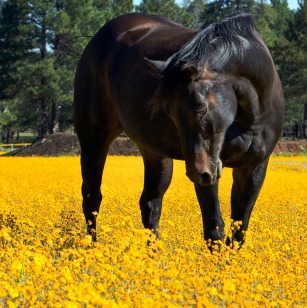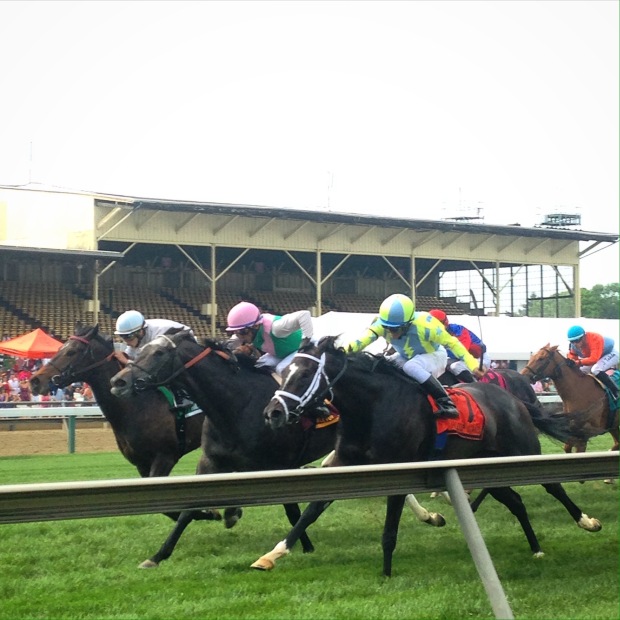For me, writing horse books is rooted in authenticity.
(This is the 2nd post in the series, So You Want To Write A Horse Book. Read the first post here.)

This can get tiresome for a writer, when you’re trying to follow a plot thread and find that it leads to a dead end, or a “that wouldn’t happen in real life” situation, but it’s the price we pay for writing for the pickiest group of readers in the universe.

(You think I’m exaggerating, but I’m not. Here is an excerpt from an actual review left an Amazon:
“I tried, I really did but I couldn’t get past chapter 3. Chapter one was bad enough where the supposed “expert” horse trainer expresses his concern that the horse has injured its ANKLE (seriously????).”
Now, this was my first book, and I’d slaved over the details, and I was selling it on the virtue of its details, so this review felt like more than just the usual slap in the face sensation I get from your regularly scheduled bad reviews. So I broke a major rule of writing and responded to the bad review with an editorial example of using the word “ankle” in horse-racing circles:
‘The “ankle” issue is a verbiage commonly used in horse racing. For example: “Havre de Grace Retired With Ankle Injury” (The Blood-Horse, April 25, 2012: http://www.bloodhorse.com/horse-racing/articles/69168/havre-de-grace-retired-with-ankle-injury). The term “ankle” is generally used when speaking of the fetlocks and lower-leg issues. Again, that’s a horse racing quirk; it might not be true of everyone’s equine experience, however.’
I’ll never know if the reviewer forgave me for using a word she wasn’t familiar with, but I would assume not. And there you have it, an example of writing for equestrians.)
I guess a very real question a potential writer might have right now is, “Why would you do this to yourself?”
We just do.
Authentic settings: this is a decision you have to make before you begin typing your first paragraphs of your book. It’s not just about using the right brush on your horse; it’s also, it’s a a lot, about settings. You have to decide: will your book reflect the real world like a window, or like a mirror?
It’s easier to make your own rules when you’re dealing with show horses, to set up a kind of looking-glass version of reality, with your own divisions and point systems, and avoid wading into the sea of mysteries that is double-A rated shows and Marshall & Sterling points and getting qualifications for entering an Advanced level Three-Day Event, unless you are incredibly comfortable in that environment.
By incredibly comfortable, I mean, you’ve been riding, training, and showing in those divisions for years. You can fill out an entry form with your eyes closed. It’s part of your normal daily life.
The need for this precision is real. Most people might not notice if you get a couple of show-ring details wrong, although if you call a fetlock an ankle, watch out! (…kidding…) But there are people who will, and they will call you out on it. There will be A-circuit kids reading your A-circuit novel, and you’re going to say something that annoys them.
It’s just a question of keeping those annoyances to a minimum.
Everyone comes up with a different solution to the window/looking glass problem. Here are three examples:

Reality for the Setting; Fiction for the Close-Ups:
I use real governing bodies (The Jockey Club, The United States Eventing Association) and real championships/stake races (The American Eventing Championships, the Kentucky Derby) along with fictional competition. My horses run in races of my own invention (The Mizner Stakes) and in made-up events (The Sunshine State Horse Trials). For locations, I only write about racetracks I’m very familiar with, like Saratoga (the setting for Other People’s Horses), or Aqueduct, Tampa Bay Downs, Gulfstream Park, and a few others. I write almost exclusively about Florida and New York because I know those places so well.
I do make sure my timing is right as well. If I’m running a horse in a fictional stakes at Gulfstream, it’s when Gulfstream would actually be open for racing. But I make up the races to avoid A) stealing glory from horses who have actually won those races; and B) to avoid getting caught up in the pesky details of condition books, qualifications, weights, etc., which is just way too much effort to put into a novel, however correct I’d like it to be. I would consider this the middle-road for authentic settings.
Keep it Real:
Fellow racing writer Mara Dabrishus isn’t afraid to get completely into real-life competition in the Breeders’ Cup and other major stakes races, and she does a great job of depicting American racing without feeling the need to spend a lot of time explaining what the hell she’s talking about. She spends more time on the actual backstretch of actual racetracks than I do. When I have Alex retreat to a rented barn or back to the farm, Mara’s characters are still slugging it out on-site at Belmont or Gulfstream. I have a lot of admiration for her discipline in this regard. I also find that when I’m reading her books, my eye is drawn to the details of places I recognize and know intimately. I’m always testing her descriptions against my memories. Be aware that when you use a real locale, you will have readers who know that place inside-out, possibly better than you do. This style is a gutsy move.
Create a Fictional, but Believable, Setting to Support the Story:
My friend Jessica Burkhart went with entirely fictional lower and collegiate-level organizations for her series Canterwood Crest, which features secondary-school competition. Rather than get wrapped up in different sports, governing bodies, and the intricacies of Young Riders Championships and the Intercollegiate Horse Shows Association, she simply developed a series of district, regional, and national championships which her characters could compete in, with the end-goal being the real United States Equestrian Team. The wisdom of this approach: it gives you so much more time to concentrate on story, and it allows riders (and hey, non-riders) of all disciplines to enjoy the series without needing technical explanations of how the discipline is run. Your story has plenty of room to shine.
What’s Right For You?
I think I can speak for anyone reading this when I say we’re all on a quest for authenticity. That’s what our readers tell us they love, over and over again. Even this one-star review for my first novel contained this caveat: “Writer was good with the horse terms and nailed the references to the life of a rider.” (The first part of the review, of course, was that it was a terrible story.)
So I believe it goes without saying that we’re all going to write the truest thing we know when it comes to our horses and our riding. We will never be allowed to gallop out of the arena after a jumping class without severe consequences; we will never feed our horse a celebratory pizza on his birthday; we will never put our neighbor’s kid on our Grand Prix dressage horse that we adopted from the BLM when we were 12 years old and had in the Olympics by the time we were 15; we will never wear a red coat to a short stirrup class, or a shadbelly to show-jumping class. I don’t have to actually point that out because we all know better. I just do it to point out what we’ve been reading all our lives, and why we’re so excited to change all that.
One good way to decide on your commitment level is to write (or think aloud in the shower, whatever works for you) the general plot-line of your book. And we’ll talk more about that in the future, but in the meantime, think of it like this. You say to yourself, “And then Michelle finds out she has a shot at the Young Riders Championships.”
You pause and think about the Young Riders Championships.
-How much do you know about it?
-How much research will you have to put into accurately portraying the Young Riders Championships?
-Will this present obstacles to your timelime? Maybe you’re writing a story with a big Christmas climax or a new foal is born at some point, but the Young Riders Championships is in July and that would throw everything off. Do you really want to change the entire story because now it needs to end in July instead of January?
-If any of these things feel problematic, consider how easy it be to simply make Young Riders into something else plausible. Why not just make up a championship called the Eventing Youth Nationals? Boom, done, easy. Your problems are solved.
Deciding on the level of authenticity in your story’s setting has much to do with your comfort level with the topics you’re tackling. If you feel at all in over your head, back away and do some serious soul-searching about how important that setting really is to your story. It might be everything. Or it might make more sense to just wave your fiction wand and make a new, more suitable setting come to life.
If you choose this route, you are not giving up your equestrian street cred. You’re actually cementing it by committing to the details you know — the nitty-gritty of equestrian life, the ins and outs of the days we spend with horses — and not compromising the knowledge level you’re presenting to your also-knowledgeable readers by winging it with some of the things they know by heart.
What are your thoughts on this subject?
